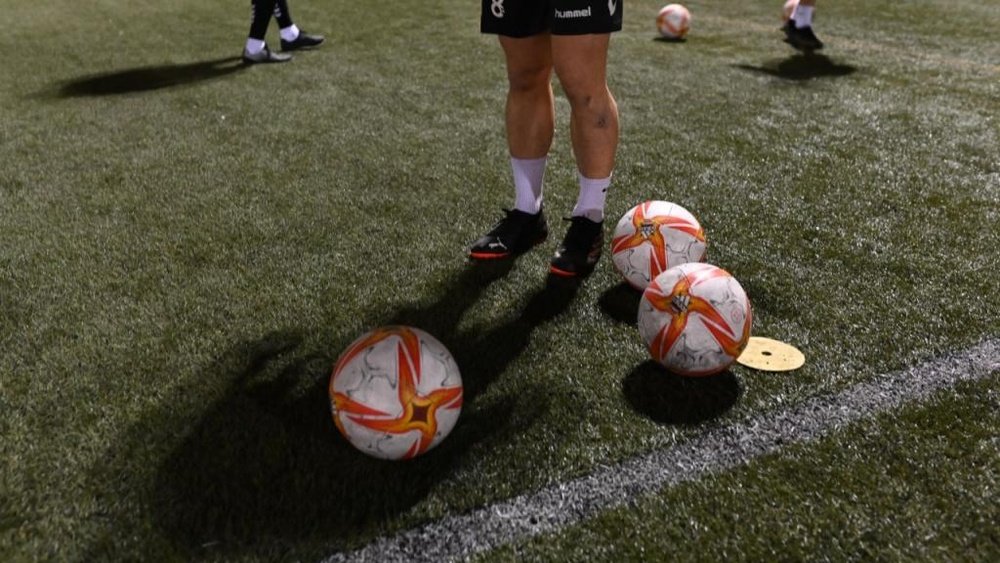Understanding the Root Causes of Muscle Pain in Soccer Players


In our quest to understand the root causes of muscle discomfort in soccer players, we'll delve into the science behind muscle function and fatigue. We'll also explore the role of training and muscle recovery in preventing muscle discomfort.
Stay with us as we unravel the mystery behind muscle discomfort in soccer players. We're confident that this knowledge will not only help soccer players manage their discomfort better, but also enhance their overall performance on the pitch.
Hardly any sport can match the physical intensity of soccer. From explosive sprints to sky-high leaps, soccer puts a ton of stress on the body. Add to this the pressure of delivering top-notch performance consistently - it's not surprising that soccer players often grapple with muscle discomfort.
Every single move in soccer requires the use of muscles. Picture a striker delivering a powerful shot. It isn't just about the legs. The core, arms, and shoulders get involved too. So, every player - regardless of position - is using a vast range of muscles during a game.
To put things in perspective, we have some data pulled from recent studies. In a 90-minute game, soccer players are found to cover anywhere between 7 and 9.5 miles on average. This figure varies depending on the player’s role and the strategies used during the game.
Diving deeper into the mechanics of soccer, we realize it's a dynamic sport with varied levels of movement. Muscle function plays a pivotal role in allowing soccer players to perform the high-intensity movements that are characteristic of the game.
The science behind muscle function in soccer is fairly involved. Essentially, soccer players primarily rely on the aerobic workflow with occasional bursts of anaerobic activity. Now, let's break that down. Aerobic exercises, like sustained running, use more oxygen and less sugar, hence they're less likely to cause muscle fatigue. On the other hand, anaerobic exercises such as sprinting and intense drills draw on glycogen stores in the muscles, leading to lactic acid build-up and eventual muscle fatigue.
When we delve into the interconnected elements causing muscle discomfort in soccer players, a myriad of physiological, nutritional, and environmental factors emerge. Let's break these down.
One dominant feature causing muscle discomfort among soccer athletes involves lactic acid build-up. Anaerobic activities, running in fast, short bursts, and the frequent transition between aerobic and anaerobic exercises lead to this accumulation. Lactic acid, as a byproduct of anaerobic exercise, increases muscle fatigue. Soccer players’ muscles, subjected to this high-intensity back-and-forth engagement, experience this tiredness more notably.
During a match, depletion of glycogen stores is another important, impact-wise, contribution to muscle discomfort. As glycogen, the body's readily available energy source, dwindles, the body shifts to using fat stores. This transition is quite demanding. It results in a stuttered game tempo and increasing muscle tiredness, which can translate to discomfort.
Let's not forget the often overlooked environmental aspect, particularly intense training conditions. These add to the risk of muscle strain and injury in soccer. High-impact actions like slide tackles, collisions on the field, even the playing surface, can contribute to exacerbating this discomfort.
Effective prevention and management of muscle discomfort begins with understanding and addressing the root causes. It's not just about quick fixes, but sustainable strategies that can elevate a player's performance.
A key part of the equation is nutrition. Soccer players need an optimal diet that sustains their energy levels, promotes muscle recovery and keeps fatigue at bay. They should increase the intake of carbohydrates and proteins, as these nutrients fuel their muscles and enhance recovery.
Adequate hydration can't be stressed enough. It's a game changer for soccer players. Dehydration not only increases fatigue but also makes muscle discomfort more likely. Rehydration with water and electrolytes during and after the game can prevent muscle cramps and glycogen depletion, offering relief from muscle discomfort.
Understanding the importance of rest and recovery can be the difference between average and outstanding performance. A balance between intense training and rest periods allows muscles to repair, adapt, and gain strength. Players should ensure sufficient sleep as it aids in muscle recovery.
Routine physical therapy can play a significant role in muscle recovery and comfort. Techniques such as massage, stretching, and strength training improve blood circulation and flexibility, reducing lactic acid buildup which contributes to muscle discomfort.
However, implementing these strategies will require patience and consistency. It's important to remember that every player's body responds differently. Hence, a thorough understanding of individual capacities, strengths, and weaknesses is essential to prevent and manage muscle discomfort effectively.
As we delve deeper into our discourse on managing muscle discomfort in soccer players, it's imperative we recognize the vital role that proper training and recovery play. Just like a well-oiled machine, a soccer player's body needs to engage in consistent proper training and abide by suitable recovery time to run smoothly.
Let's discuss training to start with. Each soccer player's training program should be individualized, ensuring it covers their specific needs and demands. Players should focus on building their strength and flexibility in a balanced manner. Overexertion leads to muscle strain, which can quickly become a recurring issue if not addressed correctly.
Following a sound recovery approach is just as crucial. It comprises adequate rest, proper diet and hydration. When we talk about adequate rest, we should highlight the importance of sleep. Good quality sleep allows for greater physical recovery and has a significant impact on a player's performance levels.
We've delved deep into why soccer players often grapple with muscle discomfort. It's evident that a well-rounded approach to training and recovery is key. Tailored programs that boost both strength and flexibility can stave off strains. Also, never underestimate the power of rest, proper nutrition, and hydration in fueling peak performance. Understanding the body's physiological aspects, such as the anaerobic threshold, also plays a critical role.